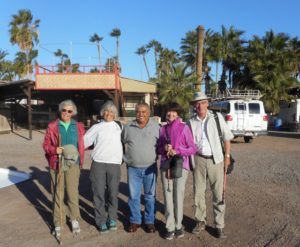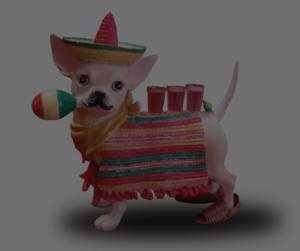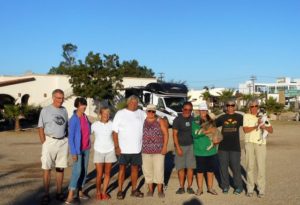
December 19, 2017 – Hard to believe we said goodbye to our guests at the Tecate/US border lineup 3 days ago as we arrived in Loreto, BCS at lunch today. Wow the last few days have flown past for sure. It seems ages ago now that we said goodbye to Oscar & Barbara and Guy & Glenda at Campestre Maranatha following our stops in Pescadero and Todos Santos. Time to head north to Puerto Escondido and the conclusion of the fall 38 Day tour with John & Ursula and Robin & Cicely in tow.
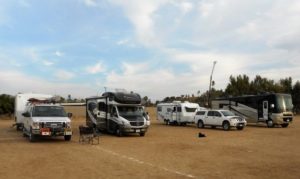
We were happy to see some major changes in Puerto Escondido, the fancy expensive Restaurant was gone, replaced by an affordable outside Bar & Grill, Pepergina’s, next door to the restaurant. Below the restaurant, El Pescador from Loreto opened a well stocked Mini-Mart with lots of cold beer, large picnic tables outside on the patio and great WiFi. They are also renovating the bathrooms and showers, and adding many more brand new docks to the facility, we are confident our guests will enjoy their experience at Puerto Escondido.
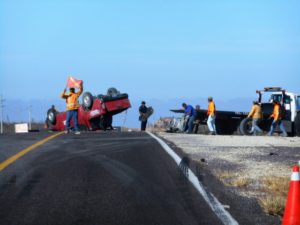
The first northerner on the Sea of Cortez was up so we decided to skip the 3 days scheduled on the beach and return to Loreto and the Rivera del Mar Trailer Park for 2 days and an extra day in Mulege at the Hotel Serenidad. We all enjoyed the extra time with all the services and the group picked up a tour of local pictographs in the Mulege Valley with Salvador. Fortunately we landed in Mulege on a Saturday so we all had Rib Dinner at the Hotel, tasty as always. Don Johnson, the owner, is still going strong at 92?, we all spent some time listening to him talk about the past and his lovely wife Nancy who sadly passed away in 2016, they were married for over 50 years. We learned for the 1st time that John Denver had flown into the Hotel Serenidad in the mid-90s and put on an impromptu show. Always something to learn from Don, a true Baja legend.
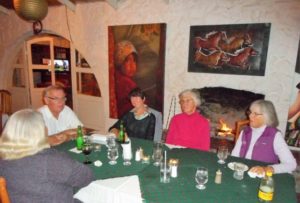
When we headed off to Guerrero Negro everyone thought the heat was over. Not so fast, we arrived it was warm, a pleasant 26C or 78F. Our drive was easy, no incidents other than seeing the Tractor Trailer that went off the cliff on the Infierno heading down to Santa Rosalia, not sure what happened, either lost his brakes or load shifted, it looked bad and the Mexicans looked a bit puzzled on how to retrieve everything, including the load of Re-Bar. Shortly after arriving at Mario’s folks were over to the Shell pile to retrieve future treasures. Some ate inside, we did not and instead watched the final episodes of West World, an intriguing HBO series Mike & Kelly picked up for us.

The next day we headed off under sunny skies and little wind to Bahia de Los Angeles and Daggett’s campground. First I had to pump up a tire that was low. I replaced this tire at the LA Bay junction when I sorted out it had a bolt in the sidewall. The Garage at the Wrecker Yard had two eager lads ready to help out. Re & Re’d the new tire I had purchased and kept in the front rack in less than 20 minutes for $20 USD, success all-around I would say.
We landed in Bahia and they were dry of diesel, lucky the Gal’s Mercedes was efficient and they made El Rosario with fuel still in the tank. We dropped over to Campo Archelon and caught up with Betty and the Resendiz family goings on. Lots of beach time for folks and the tour of town of course. The road was from Guerrero Negro to LA Bay, was Good, mostly Bad, and some very Ugly. We took our time and had now problems, speed is the key to avoid damage. Other wise you will have flat tires, bent axels and broken springs.

Catavina was next after a couple of days in Bahia, more bad and ugly road on Hwy 1. This was a one night stand then off to Vicente Guerrero and Posado Don Diego’s Restaurant and RV Park. The road was bad for an additional 50 KM out of Catavina to KM 133 before we got a break. This road is not helping efforts by many to promote RVing on Baja. The next morning we headed off to Sordo Mudo in the Valle de Guadalupe, traffic was quiet except for a few crazy drivers with mostly California plates, many should have left the day before. On arrival at Sordo Mudo, John and Ursula said their goodbyes and headed off to Tecate. We learned later it only took them 30 minutes to get across. The remaining 4 of us headed off to LA Cetto for a tour and tasting. Lisa and I did not do the tour, the Gals did and enjoyed. Wine tasting over we headed back to Campground and 28C or 82F, but it did cool off quickly with a low of 6C. Up early as expected and on the road by 7:08 Am, said our goodbyes at the border lineup at 8:10 AM. It was a long line that went past the turnoff, the Gals told us it took 2 hrs. Our tour duties complete we returned to Sordo Mudo for the trailer and headed back to Ensenada. We stayed overnight in Punta Banada and had dinner with our good friends Adolfo & Belem Villarino.
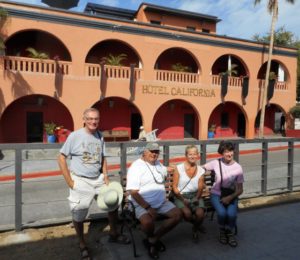
Feliz Navidad y Prospero Ano Neuvo
Did you know?
BAJA RUSSIANS
In early 1881, a Czar Nicholas II decree demanded military service nationwide, the Molokans, resisted due to their belief in peace and harmony and pacifism values. In a sense Molokans are Protestants for rejecting Orthodoxy, and like Presbyterians in that they have a council of dominant elders. Although Molokans are somewhat similar to the European Quakers and Mennonites — for their pacifism, communal organization, spiritual meetings, they are ethnically much closer to Doukhobors because they evolved from the same Russian Spiritual Christian movement. The government responded with exile, imprisonment, torture, and forceful induction into the armed forces. During this period of extreme suffering the Molokans decided to try to migrate to the United States. At the beginning of 1900 the Molokans wrote a petition to Tsar Nicholas Alexandrovich asking for permission to leave Russia. The Tsar denied the request, but Leo Tolstoy, who greatly admired the Molokans, helped them get the necessary permission and many moved to California, most settling around Los Angeles.
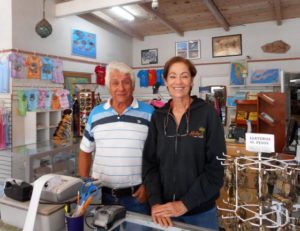
Soon this rural group, however, found a big city environment a little difficult for raising crops and had to look elsewhere. Their prayers were answered in 1905 as Mexican President Porfirio Diaz agreed to sell the sect 13,000 acres of fertile land in Baja California’s Guadalupe Valley. Hence initially 50 families of Molokans, who had originally settled in Los Angeles after emigrating from Russia, relocated to Mexico. Theirs would become the most successful Molokan colony in North America. Eventually 105 families of Russian settlers (about 500 total) laid out their town the way they had at home, equal partitioned lots along a broad treecovered avenue. Their whitewashed adobe and wood Russian style homes with steep-pitched wooden (some thatched) roofs had front doors that faced away from the street. The farms flourished and the former arid and unproductive land was now converted into a very productive oasis of plenty. Wild horses, descendants of Spanish horses, were tamed and trained as draft horses making the Molokans the first ones in Mexico to use horses instead of oxen to work their farming equipment.

They grew a variety of cash crops including wheat, alfalfa, grapes, olives and tomatoes, raised gaggles of geese and bees for honey. Homes had basements to store their jams, preserves and honey. They baked an excellent Russian bread and drank tea or “chai” made in the samovar. Their main dish was Borscht, which they cooked with wooden spoons. The Molokans worked hard and prayed hard. They dressed simply with women covering their heads with homemade “kosinkas” or shawls, and the bearded men wore high-collared shirts called “rubajas” which had drawstrings around the waist.
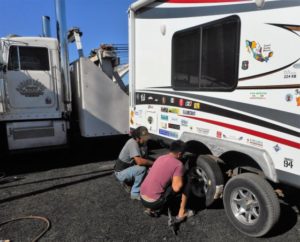
They became splendid citizens of Mexico and while they spoke Russian in church and at home, were ever loyal to their adopted country. It is said that Russian-born Mary Rogoff, while she had only a third-grade education, delivered over 1,000 babies to the women of the valley. The farming colony grew quickly with over 800 Russians in the valley by 1928 many became Mexican citizens by naturalization or by birth. In 1938 the popular Mexican President Cardenas designated lands for the peasants of Mexico. Guadalupe was engulfed by 3,000 Mexicans and the town was renamed Francisco Zarco. The farming colony continued to grow until about 1940 when many began to move back into California to join others near the town of Bakersfield. By 1947 there were 49 families remaining in Guadalupe Valley. Their village was originally quite isolated, reflecting their desire to withdraw from society, but in 1958, road construction in the area resulted in an influx of Mexican and other settlers; some Molokans again chose to flee encroaching urbanisation, and returned to the United States, others stayed and over time have assimilated into the culture. In 1959 squatters began to invade the valley and took over many Molokan farms forcing the Russians to abandon almost all property and investments by 1965. By the 1990s, only one Molokan family remained in the area.
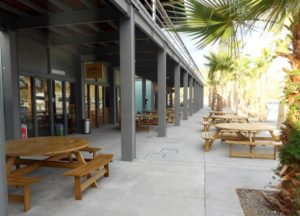
It was the Molokans who first introduced grapes into the valley on a large scale. The missionaries had planted some small vineyards near the mission prior to 1907, but never really developed the full potential that the valley could offer. Some members of the Russian community had gained experience growing grapes in Europe and put their skills and knowledge to work in creating one of the most important grape producing regions in the world. Several important varieties of table and other grapes were grown such as: Emperor, Ribbier, Thompson (seedless), Flame, Tokay, and White Muscatel. Today a few descendants of the original Molokans families continue to grow grapes and make wine. David and Abel Bibayoff Dalgoff own and cultivate about 80 acres of table and wine grapes in a region of Guadalupe Valley called Rancho Toros Pintos. Alexie M. Dalgoff obtained a permit to make wine in the 1930’s and the family continues the wine growing and winemaking tradition with a nice selection of wines and quality table grapes from their beautiful vineyard.
